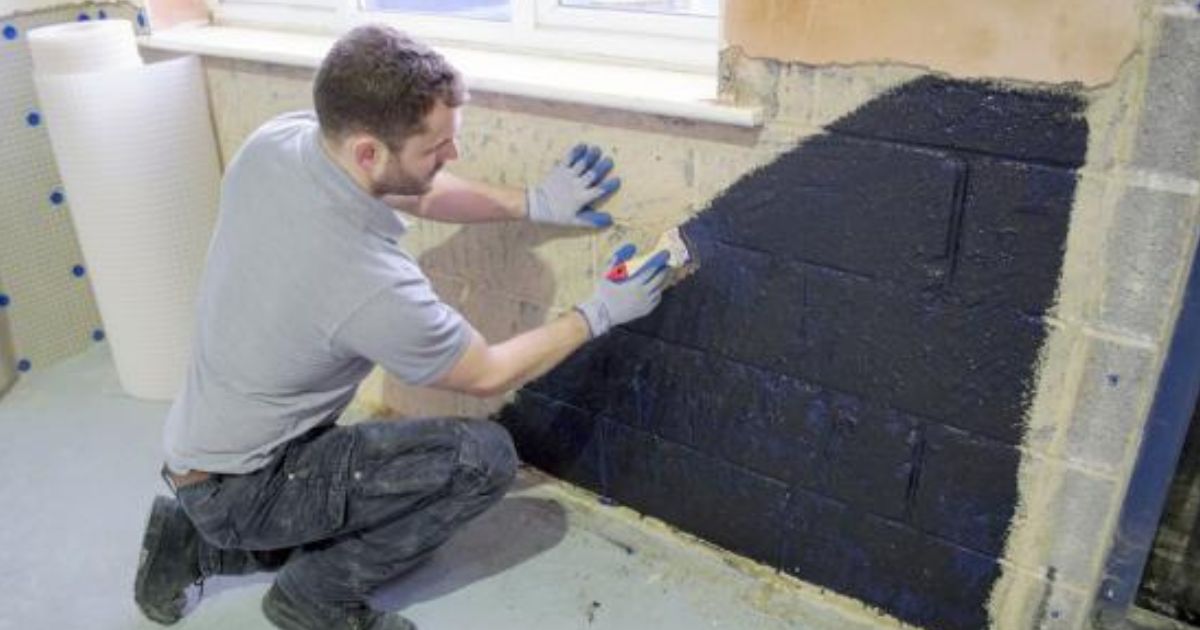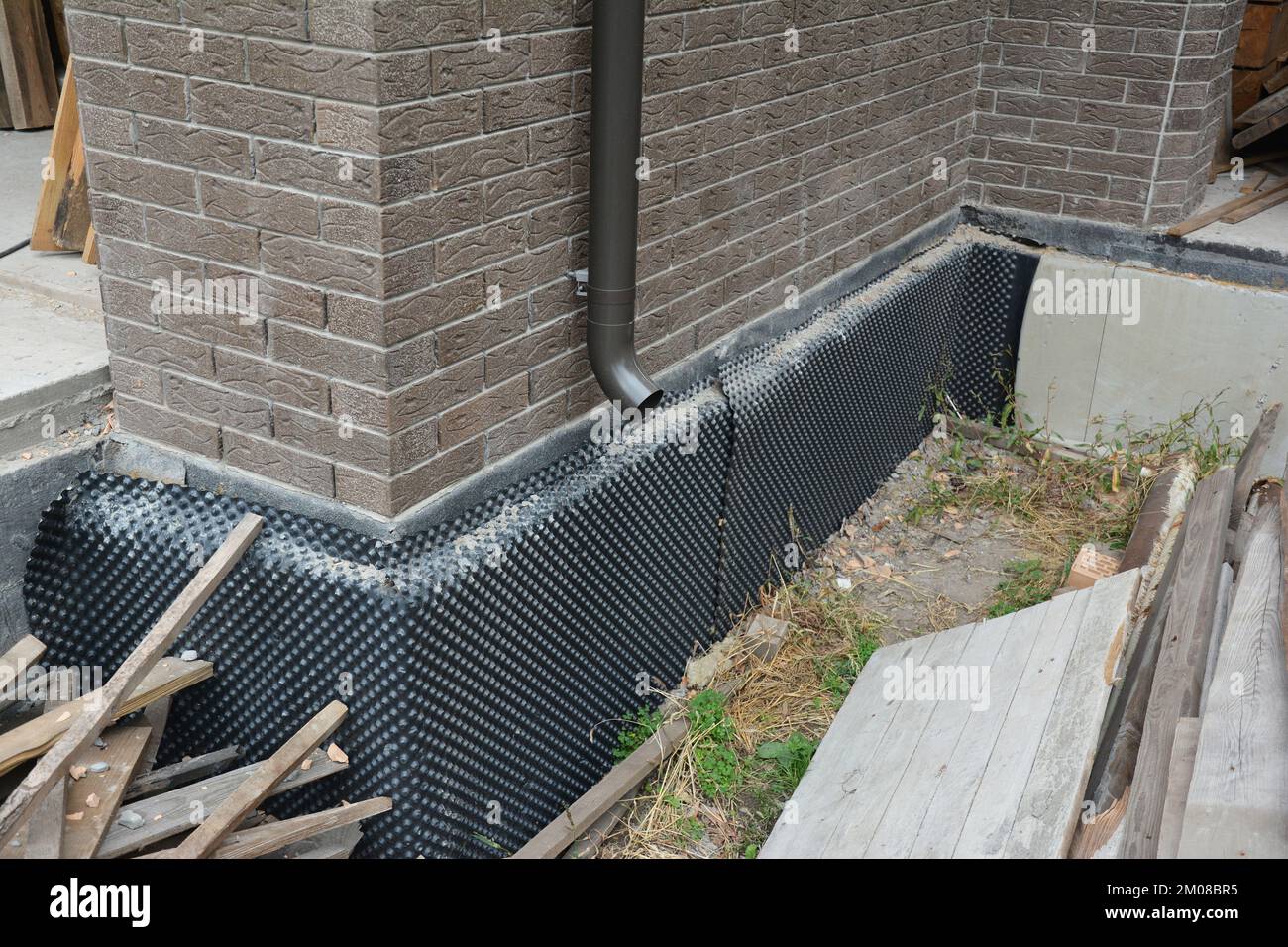Must-have equipment damp specialist newcastle uses during inspection
Must-have equipment damp specialist newcastle uses during inspection
Blog Article
Exploring the Various Techniques and Solutions for Effective Damp Proofing
Dampness in buildings poses significant obstacles to both architectural honesty and indoor air top quality. Various methods and options have emerged to battle this prevalent problem. From typical damp-proof membranes to ingenious chemical treatments, each method uses one-of-a-kind advantages. Comprehending these alternatives is essential for reliable dampness control. Selecting the ideal remedy depends on specific structure problems and requirements, triggering more exploration into the most efficient damp proofing approaches readily available.
Recognizing the Root Causes Of Dampness
Although dampness can occur from numerous sources, understanding these reasons is essential for efficient removal. Typically, wetness stems from 3 primary sources: rising damp, passing through moist, and condensation. Increasing damp takes place when groundwater takes a trip up-wards with permeable materials, such as brick or rock, frequently as a result of a lack of an efficient barrier (damp specialist newcastle). Passing through moist is usually brought on by exterior variables, including roofing system leakages, malfunctioning seamless gutters, or harmed walls, permitting water to infiltrate a building. Condensation, on the other hand, arises from excess wetness in the air, commonly exacerbated by inadequate ventilation and temperature level distinctions, resulting in water beads basing on surface areas. Recognizing these underlying problems is essential, as each sort of wetness needs a customized method for removal. Proper evaluation helps in identifying the most reliable options, eventually safeguarding the structural honesty of a building and boosting indoor air high quality
Typical Damp-Proof Membranes

Chemical Damp-Proofing Solutions
Chemical damp-proofing options use a cutting-edge approach to avoid wetness invasion in structures. These approaches generally include the application of liquid chemicals that permeate masonry and form an obstacle versus rising wet. Typically utilized chemicals include silanes, siloxanes, and various other water-repellent representatives that react with surface area products to produce a hydrophobic layer.The application procedure typically requires boring openings into the walls, injecting the chemical option, and allowing it to cure. This technique is specifically useful for older frameworks where traditional damp-proof membranes might be unwise. Moreover, chemical damp-proofing can be much less disruptive and extra cost-effective than considerable remodelling projects.While efficient, these solutions depend on correct application and ecological problems for peak efficiency. Normal upkeep and monitoring are important to ensure the durability of the damp-proofing therapy. Overall, chemical damp-proofing represents a versatile alternative for securing buildings versus moisture-related damages
Cavity Wall Construction Methods
Tooth cavity wall surface building strategies provide various benefits, specifically in wetness control and energy performance. By incorporating an air space between 2 layers of stonework, these walls effectively reduce water ingress while boosting insulation. This mix not just shields structures from moisture but additionally adds to reduced energy consumption.
Advantages of Cavity Walls
When considering reliable moist proofing approaches, the advantages of dental caries wall surfaces stand out plainly. Dental caries wall surfaces consist of 2 separate layers, producing an air gap that effectively lowers dampness infiltration. This style lessens the danger of dampness, as the external wall works as a barrier against rainfall and water access. Furthermore, cavity wall surfaces improve thermal insulation, which adds to power performance by lowering heat loss. They also provide sound insulation, helping to create a quieter indoor setting. The air space enables for air flow, which aids in dampness control and decreases the chance of mold development. These advantages not only enhance the total comfort of a building however also add to its longevity and structural integrity.
Dampness Control Strategies
Effective moisture control approaches are crucial in cavity wall surface building and construction to ensure lasting defense against moisture. One primary method involves the unification of weep holes, which help with water drainage from the dental caries, preventing buildup. Additionally, the usage of breathable membranes can assist handle moisture degrees while allowing trapped vapor to escape. Proper positioning of insulation is additionally vital, as it must not block drainage courses. Additionally, making sure that the outer fallen leaves of the cavity wall are constructed with waterproof materials enhances overall toughness. Regular maintenance checks are necessary to recognize any obstructions or damage early, protecting the framework's honesty. Inevitably, a combination of these methods creates a durable defense against moisture intrusion in tooth cavity walls.
Insulation and Power Efficiency
Insulation plays an important role in improving power efficiency within dental caries wall construction. By including shielding products, these wall surfaces produce a thermal obstacle that decreases warmth loss and minimizes energy consumption. Efficient insulation not only helps preserve a stable interior temperature level yet likewise minimizes the threat of wetness, as it avoids condensation within the wall surface cavity. Various techniques, such as using stiff foam boards or mineral wool, can be utilized to attain optimal insulation performance. In addition, correct setup is necessary to assure that voids and voids are lessened, which can otherwise compromise energy performance. Inevitably, a well-insulated dental caries wall surface contributes greatly to total sustainability and lowers heating & cooling costs for house owners.
External Damp Proofing Approaches
Exterior damp proofing techniques are vital for securing structures from wetness infiltration. Two reliable strategies consist of the application of waterproof membranes and the setup of French drains. damp proofing newcastle These solutions aid minimize water accumulation and protect the stability of buildings.
Waterproof Membrane Application
While different approaches exist for protecting against moisture access, the application of water-proof membranes remains an extremely efficient exterior wet proofing technique. These membranes are typically made from materials such as polyethylene, rubber, or customized bitumen, giving a durable obstacle versus water infiltration. The setup process involves using the membrane layer to the exterior surfaces of walls or foundations, guaranteeing complete insurance coverage to avoid leakages. Appropriate adhesion and securing at joints are crucial to taking full advantage of effectiveness. Waterproof membranes can be applied in different kinds, including liquid finishes and sheet membrane layers, allowing for flexibility based upon the specific demands of the framework. This technique not only safeguards structures from moisture yet also enhances their longevity and architectural honesty.
French Drain Installment
One efficient approach for handling groundwater and protecting against dampness accumulation around a building's structure is the installation of a French drain. This drain system consists of a trench filled with crushed rock and a perforated pipe that reroutes surface area water away from the foundation. Appropriate setup needs cautious preparation, making certain that the drain inclines far from the framework to facilitate suitable water circulation. Furthermore, the place of the drain is essential; it must be placed in areas susceptible to merging or excess moisture. Normal maintenance, including clearing up particles from the crushed rock and making certain the pipeline remains unblocked, is important for long-lasting effectiveness. Eventually, a well-installed French drainpipe can considerably decrease the threat of water-related issues in cellars and structures.
Inside Waterproofing Strategies
Inside waterproofing strategies are vital for protecting a building's interior from wetness seepage and possible water damages. These approaches typically include the application of specific materials and strategies created to create a wetness barrier within the framework. One common method is making use of waterproof coverings or sealants on wall surfaces and floorings, which avoid moisture from penetrating surfaces.Additionally, installing indoor water drainage systems, such as sump pumps, can properly take care of water buildup in basements and creep spaces. Another approach includes making use of vapor obstacles, which are installed to inhibit moisture motion from the ground right into living spaces.Moreover, dealing with any type of cracks or spaces in walls or structures with ideal sealants guarantees a comprehensive protection against water invasion. By carrying out these indoor waterproofing strategies, homeowner can considerably decrease the danger of mold and mildew development, structural damage, and other moisture-related problems. Proper implementation of these methods is necessary for long-term protection and building honesty.
Regular Upkeep and Inspection Practices
Normal upkeep and inspection techniques are vital for assuring the long-term effectiveness of damp proofing options in any type of building. Routine checks enable property proprietors to recognize early indicators of moisture invasion, such as peeling off paint, mold and mildew development, and musty odors. These indications can signal underlying problems that need immediate attention.Inspections should be conducted a minimum of annually, focusing on prone areas like basements, creep spaces, and outside walls. Throughout these assessments, home proprietors must examine sealants, water drainage systems, and air flow to verify they work correctly.Additionally, keeping rain gutters and downspouts is essential, as blocked systems can bring about water accumulation near the foundation. Implementing a normal upkeep schedule, in addition to timely fixings, can considerably prolong the lifespan of moist proofing actions and shield the structural integrity of the structure. Proactive actions ultimately add to the overall health and wellness of the living setting.
Frequently Asked Concerns
The Length Of Time Does Damp Proofing Usually Last?
The period of damp proofing effectiveness differs, commonly lasting in between 20 to 50 years. Variables such as application quality, environmental conditions, and maintenance practices substantially affect the longevity of the wet proofing therapy.

Can I Damp Proof My Home Myself?
The specific contemplated the feasibility of DIY damp proofing. With proper research and the best products, it is possible. They also acknowledged the relevance of professional guidance to assure long-lasting performance and protect against future problems.
What Are the Indicators of Inefficient Damp Proofing?
Indicators of inadequate moist proofing include persistent mildewy odors, noticeable mold and mildew development, peeling off paint, damp patches on wall surfaces, and wood degeneration - mould removal newcastle. Property owners need to resolve these concerns without delay to avoid more damage and wellness concerns
Does Damp Proofing Affect Indoor Air Top Quality?

Exactly How Much Does Expert Damp Proofing Price?
Expert wet proofing costs vary substantially, usually varying from $1,000 to $5,000 depending on the residential or commercial property's size, the degree of the moist issue, and chosen methods. Each situation needs a customized evaluation for exact pricing. Generally, moisture stems from 3 key resources: increasing wet, passing through damp, and condensation. When thinking about effective damp proofing methods, the advantages of dental caries walls stand out prominently. External moist proofing methods are crucial for shielding structures from wetness seepage. While numerous approaches exist for stopping dampness access, the application of waterproof membranes continues to be a highly effective exterior damp proofing technique. Signs of inadequate wet proofing consist of persistent moldy odors, noticeable mold development, peeling paint, wet spots on walls, and timber degeneration.
Report this page